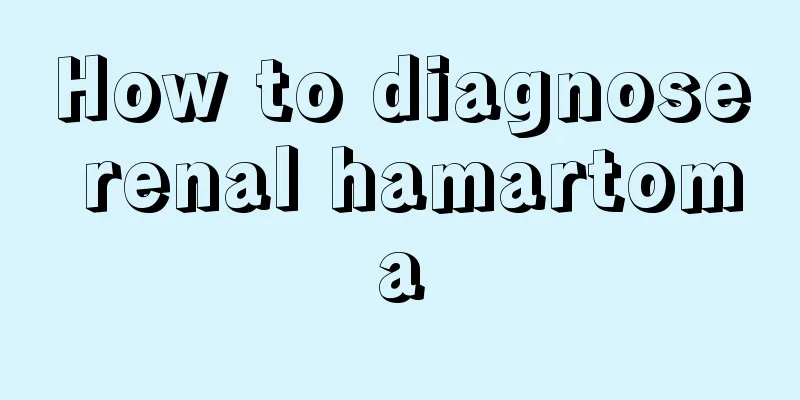How to treat renal infarction

|
Renal infarction is a common condition in our lives. It is mainly caused by blockage of the renal artery, which leads to poor blood circulation, which can seriously affect the patient's health, especially kidney function. The treatment of renal infarction is generally to treat the symptoms of renal ischemia through vascular revascularization. This operation has certain risks. It is important for patients to be mentally prepared and cooperate with the doctor's treatment. 1. Surgical treatment : Surgical thrombectomy or revascularization as soon as possible can minimize the area of ischemic necrosis of the diseased kidney and effectively save kidney function. However, the operation is highly traumatic and poses great risks to patients with concurrent acute renal failure, refractory hypertension, or even acute pulmonary edema, cerebral edema, and severe underlying diseases. Therefore, whether to perform surgical operation should be considered based on the patient's overall tolerance. The main indications for surgery are: (1) Traumatic renal artery occlusion. (2) Occlusion of the main trunk or major branches of both renal arteries (or occlusion of an isolated renal artery). (3) The time of renal artery occlusion is within 12 hours. For those who undergo surgery after 12 hours, the possibility of renal function recovery decreases. For those who undergo surgery within 12 to 18 hours, renal function recovery is only 50%. However, if the time is delayed further, renal function may not be recovered. 2. Interventional treatment Selective renal arteriography is a definitive means of diagnosing renal infarction. On this basis, further renal artery thrombectomy, thrombolysis and angioplasty are currently reported in the literature to be relatively effective and safe methods. Although the early diagnosis rate of the disease is low and there is a lack of large-scale clinical treatment experience summary, interventional treatment is simple and easy to operate, less traumatic, can be repeated, and patients can still tolerate it when the condition is critical. It is worthy of development and application in hospitals with conditions. The method is to use about 4 ml of 2% procaine for local anesthesia, puncture the femoral artery (mostly the right side), send a special renal artery angiography catheter, thrombectomy catheter or balloon catheter to the occluded renal artery, and perform intra-arterial thrombolysis, embolus removal or balloon dilatation as needed. For patients clinically diagnosed with acute thrombosis or thromboembolism, thrombolytic therapy should be used first. For patients diagnosed with cancer embolism, heart valve vegetation embolism, foreign body embolism (such as intravascular stents, atrial and ventricular septal patches, etc.) embolism, or old thrombi that cannot be dissolved by local thrombolysis, embolus extraction should be tried. If intra-arterial thrombolysis and thrombectomy are unsuccessful, or if obvious renal artery stenosis still exists after thrombolysis and thrombectomy (it is generally believed that stenosis ≥ 75% may cause pathological changes), balloon dilatation should be given to open the main trunk or large branches of the renal artery (the thrombus may block small artery branches after being squeezed and broken by the balloon, but the area of ischemic necrosis will be significantly reduced) to completely resolve the anatomical cause of renal ischemia. The method of administration for intra-arterial thrombolysis is to dilute 100,000 U of urokinase or streptokinase with 20 ml of normal saline and slowly push it into the catheter. It takes about half an hour to complete the injection and can be reused. Local medication doses within 500,000 U are generally considered to be relatively safe. 3. Medical treatment (1) Intravenous thrombolysis: The effect of intravenous thrombolysis is not as certain as intra-arterial thrombolysis, but it is cheaper and does not require expensive equipment and operating techniques for interventional treatment, so it can be performed in general hospitals. Therefore, it is worth promoting. Indications: Suitable for all patients with renal artery thrombosis or thromboembolism. Contraindications: ① Elderly patients. It is generally believed that patients aged >75 years are not suitable for intravenous thrombolytic therapy. ② Bleeding tendency. ③History of deep tissue trauma or puncture within six months. ④History of cerebrovascular accident within six months. ⑤Allergy to thrombolytic agents. ⑥Uncontrolled hypertension. Administration: 200,000 to 400,000 U of urokinase or streptokinase is dissolved in 100 to 500 ml of liquid and administered by intravenous drip within 3 hours. Local intra-arterial infusion of streptokinase or urokinase is often more effective than intravenous thrombolysis in low-risk patients with viable renal tissue. Once a day, for 3 to 7 consecutive days (some experts believe that a daily dosage of 500,000 to 1,000,000 U is still safe). During the thrombolysis process, coagulation time and fibrinogen quantification were checked every day. (2) Anticoagulant therapy: Patients with a history of thrombosis or embolism, as well as patients after surgery, interventional therapy, and intravenous thrombolytic therapy, should also receive routine anticoagulant therapy to prevent recurrence of embolism. Hospitalized patients can be given unfractionated heparin or relatively low molecular weight heparin intravenously or subcutaneously. For long-term use, oral anticoagulants such as warfarin, ticlopidine (ticlopidine) or aspirin can be given. The dosage requirements are personalized, and the bleeding and coagulation time should be monitored regularly during the medication process, and the dosage should be adjusted at any time to prevent bleeding complications. (3) Symptomatic treatment: ① Treatment of hypertension: Hypertension often occurs within 1 week of onset and returns to normal in 2 to 3 weeks. Some patients persist for life. Its mechanism of occurrence is related to renal ischemia leading to increased secretion of renin by juxtaglomerular cells and increased activity of the renin-angiotensin system, so angiotensin converting enzyme inhibitors or angiotensin II receptor antagonists may be effective. However, since these two types of drugs dilate the afferent arterioles while dilating the systemic arteries, when the perfusion pressure of the afferent arterioles decreases due to renal artery thrombosis or embolism, it can cause a further decrease in glomerular blood flow, leading to worsening of renal function. Therefore, the use of drugs should be carefully weighed. Other antihypertensive drugs have poor therapeutic effects. Hypertensive crisis should be treated with strong and fast-acting intravenous antihypertensive drugs such as sodium nitroprusside or phentolamine (Liquidine). ② Treatment of acute renal failure: For patients with acute renal failure, timely hemodialysis treatment can alleviate symptoms and buy time for further surgical or interventional treatment. ③Correct imbalance of water, electrolytes and acid-base. |
<<: Acute brainstem infarction
>>: The most common cause of pulmonary infarction
Recommend
What foods can help improve sleep?
We all encounter problems with sleeping in our li...
Can pituitary tumors be completely cured?
Most people don't know about pituitary tumors...
What to do if your skin is dry
Many people have dry skin problems. Dry skin in y...
The toxins in women's bodies actually come from it
There are many things in life that can cause pois...
Symptoms of peritoneal metastasis of colorectal cancer
When intestinal cancer causes peritoneal metastas...
How to remove 502 glue from clothes
In life, we often use 502 glue to paste things, b...
The efficacy of wolfberry and chrysanthemum soaked in water
The medicinal value of soaking wolfberry and chry...
What are the typical clinical manifestations of angina pectoris?
Angina pectoris occurs in many people and has an ...
What are the symptoms of mental illness?
Mental illness is a kind of pathology. It is very...
How to treat liver cancer in late stage? Check out three treatment methods for liver cancer in late stage
There are three treatment methods for liver cance...
Is prostate cancer likely to be inherited?
Many diseases that are very harmful to people do ...
What are some good folk remedies for quitting drinking?
The most frustrating thing is that you want to qu...
What is the daily care for lung cancer patients? Four aspects of care should be provided for lung cancer patients
The treatment process of lung cancer is relativel...
What should I do if I have acne and peeling on my face?
Acne on the face is a phenomenon that no one want...
Indications for transanal minimally invasive surgery in the treatment of rectal cancer
Transabdominal, transsacral and transanal approac...









